4 most beautiful castles in Belarus
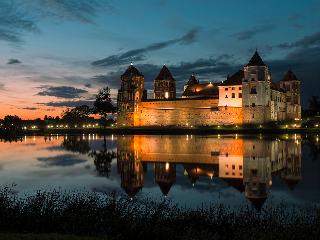
Castles in Belarus are the eyewitnesses of a bygone era, symbols of history and architectural monuments. Dozens of castles were built all over of our country, but only few of them were saved. Many of them have already been reconstructed, some of them are waiting for their turn, but all of them deserve your attention.
History of castles in Belarus
The first castles in Belarus were built primarily with a defensive purpose, that’s why the construction sites were chosen in the lowlands (such castles were earthly) or in the highlands (such castles are called mountainous). The materials for construction were taken from the territory of Belarus. Fortresses in Orsha, Pinsk, Gomel, Mogilev, etc. were built of timber; Castles in Lida, Novogrudok, Zaslavl, Mir and Krevo were built of stone.
City strongholds also had a defensive purpose, that is why their sizes were often huge. Private residences of the XVI-XVIII centuries had two parts: an external strengthening and a palace. The palace was the main cultural composition. The castles of the XV-XVI centuries traced the features of the Renaissance and Gothic, Baroque elements appeared in the XVII century. Bastion forts appeared in the middle of the XVI century (castles in Lyakhovichi and Zaslavl). Only at the end of the XVI century the construction of palace and castle complexes started (castles in Galshany and Nesvizh). By the end of the XVIII century fortresses replaced all medieval palaces and castles, which were often complemented with defense lines a few kilometers away.
We suggest you to learn more about the most beautiful castles in Belarus:
- Nesvizh Castle
- Mir Castle
- Kossovo Castle
- Lida Castle
Nesvizh Castle
Nesvizh Castle is a residence of Radzivills. It was named as a world heritage site by UNESCO. If you haven’t been to Nesvizh, you haven’t seen Belarus. More than 200 thousands of tourists visit this small town every year. It is popular because of Radzivills who have made Nesvizh their residence.
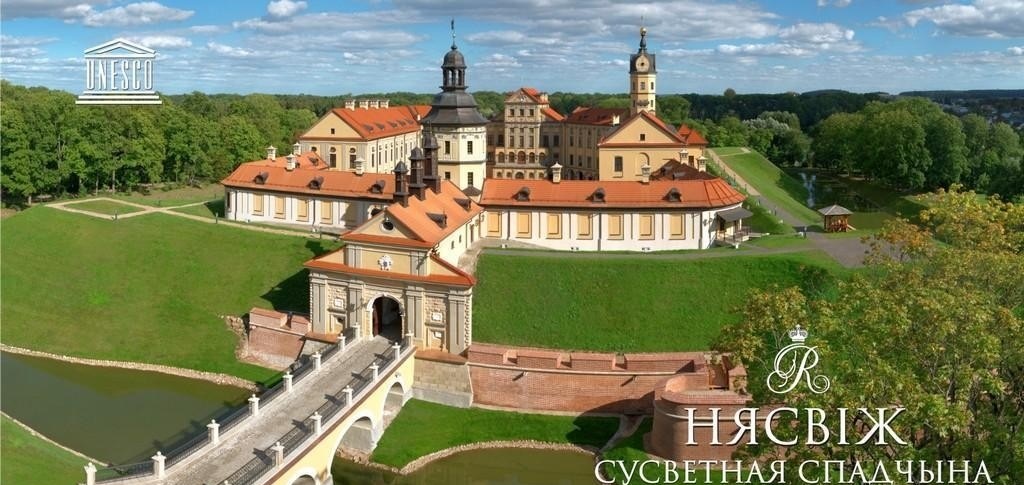
History of Nesvizh castle
The Italian architect Giovanni Bernardoni designed and built a stone castle in the 16th century. For centuries it was considered the most advanced fort of Belarus and withstood many assaults. Only at the beginning of the 18th century the Swedes raid the castle and destroyed it thoroughly. After the restoration, the castle turned into a secular Baroque-style palace. For 4 centuries Radzivills were the owners of the castle.
Exterior of Nesvizh Castle:
Nesvizh Castle strikes at first sight, it looks very romantic: a huge construction in a harmonious combination with towers of various sizes and decorative adornments. In the Nesvizh castle’s heyday there were 12 halls and 365 rooms, according to the number of months and days in a year. In general form of the castle complex in Nesvizh you can see a symmetry, which gives the castle a special charm. The central building is decorated with attached piers, relief decorations, sculptural compositions and rich fretwork. On the back of the central building there is a terrace with two towers, and eastern tower has a chapel of the knyaz.
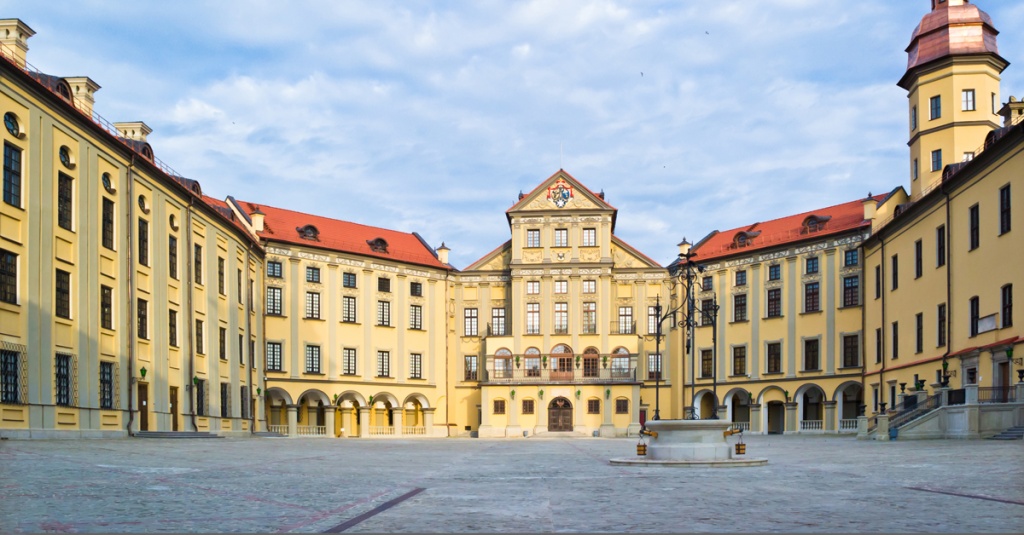
Nesvizh castle today:
Today Nesvizh Castle is the second most visited place in Belarus (the first one is Brest Fortress). Going on tour you can take an audio guide, which will tell you about the history of the castle, providing details. Main halls are open for tourists. Ballroom is their one of the most beautiful parts. It retains the original fretwork. In the royal hall you can enjoy theatre productions that the Radzivills watched themselves. Earlier in the castle there was a large collection of Slutsk belts, but today there are only small fragments. A special room in the castle is an armoury. Since the castle had a defensive purpose, such a room was necessary. Here you can find various military weapons and ammunition.
The most famous legend of Nesvizh Castle is about the Black Dame of Nesvizh, who wanders around the castle. But this Black Dame is none other than Barbara Radzivill - the wife of the Polish king Sigismund Augustus. The mother of king didn’t like Barbara, that is why she ordered to kill her. After her death, Sigismund Augustus came to Nesvizh and decided to arrange a magic session in order to summon the spirit of his lady-love. The main condition was not to touch her. When the king saw the spirit of Barbara, he rushed to hug her, that break the magic. Since then, the spirit of Barbara Radzivill wanders around the castle, and people see her when she warns about the trouble.
Mir Castle
Mir Castle is located in the same town not far from Minsk. It was named as a world heritage site by UNESCO in 2000, also one British magazine called it the most beautiful castle in Europe.

Exterior of Mir Castle
According to some historical data, the castle was built in the 1520’s. Externally the castle resembles a slightly skewed quadrangle formed by the castle walls. Each of them is 75 meters long and 2-4 meters wide. The castle was well adapted to battle shooting, as evidenced by two rows of loopholes. The towers are slightly extended along the walls, which allowed to fight along them - in those days it was considered the most progressive defense scheme. You could enter the castle from the only gate, which was protected by a heavy metal grating. According to some reports, the defensive look of the castle was needed in order to maintain the status of its owner. Indeed, the castle looks majestic after 500 years.
History of Mir Castle
The foundation of the castle was laid by the noble family of Ilinichi, but it did not last long. After them the owner of the castle was the most powerful dynasty Radzivills, but then the castle was resold to knyaz Svyatopolk Mirsky. It is rumored that he bought the castle only because of the consonance with his surname. During the War there was a Jewish ghetto, later there lived those who were left without a roof over their heads.
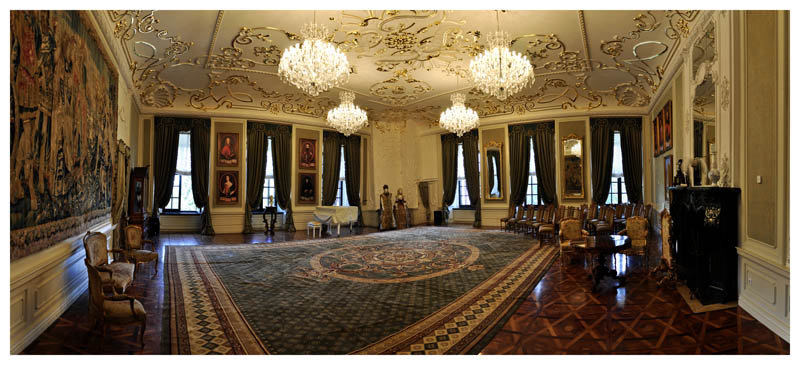
Mir Castle today:
At the end of the last century after the Great Patriotic War the reconstruction of the castle started. It lasted 27 years, which was slightly less than the construction of the castle itself. The interior of today’s castle is made in the style of 18-19th centuries: there are a lot of walls without plaster: with exposed brick and natural wood. The main asset of the castle is the wall of the 16th century: there are animal footprints and traces of branches on it. The castle has a lot of narrow passages and secret staircases. All tourists can feel what it is like to be an archer of that time and climb the towers along the spiral staircases. There are three floors in the castle. On the first one pantry is located. It is rumored that there were so many products stored in it, that it would be enough for three years of siege. In the underground prison you can see the instruments of torture of that time. Knights lived in Mir, so today you can see their armor in the castle.
Legends of Mir Castle
There is a small stone that resembles the head of a ram on the south side of Mir Castle. According to the legend, if this stone falls, the castle will collapse to the ground.
Kossovo Castle
Kossovo Castle is a unique and unusual castle that strikes at first sight. The first owner of the castle was Kazimir Puslovsky, who built in the town a factory, several churches for the townspeople and a palace for himself. The famous Polish architect Frantisek Jaschola worked on the project, the construction started in 1838.
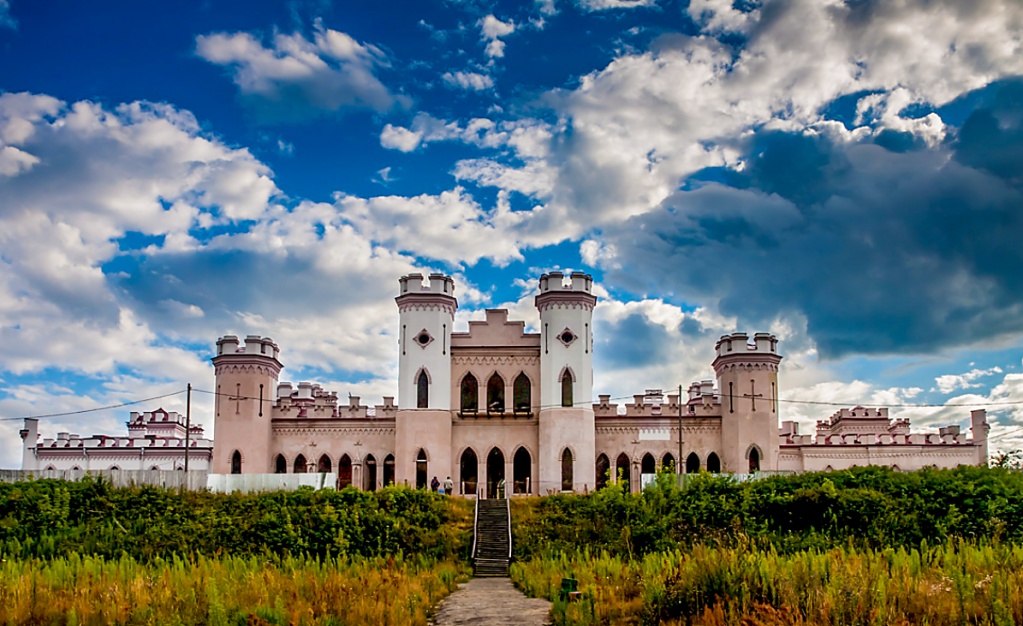
History of Kossovo Castle:
The owner of the castle didn’t live up to the end castle’s construction. The new owner was his son Vandalin Puslovsky, and after him was the next member of the House - Leon. He visited the castle very rarely, only to have another ball or masquerade. In addition, he was a compulsive gambler. One day Leon gamble away a lot of money, that’s why he had to sell the castle to the St. Petersburg merchant Alexandrov. Since that the owners of the castle changed very quickly. The merchant sold the castle to Anna Trubetskaya, then she resold it to the prince of Oldenburg.
Exterior of Kossovo Castle
Externally the castle strikes with its architecture. Each tower symbolizes every month of the year, central tower included small turrets – they are symbols of fertile months from May to August. There were 130 rooms in the castle and each of them had its own name. The design was thoroughly thought-out according to the function of the room. For example, the Pink Hall was preferable only for musical evenings, in the Black Room the hosts played card games. The main one was the White Hall – balls and social occasions were hosted there.
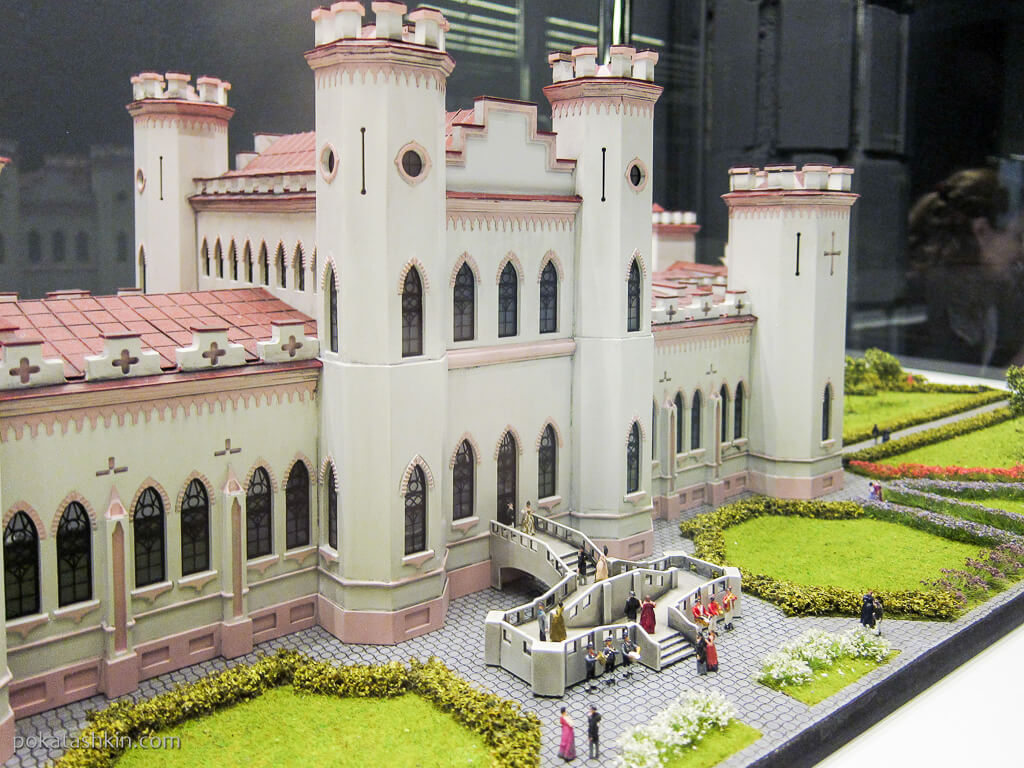
Kossovo Castle Today:
Wars also didn’t spare the castle. During the First World War the collection of rare plants was lost. And during the Great Patriotic War there was a ghetto on the territory of the castle, where almost all Jewish population was destroyed. Only in 2017 the castle was fully restored and now it is accessible to tourists.
There is a ghost in the castle – the wife of the count. She was upset because of her son’s failure. Still the ghost walks around the castle and its environs and looks for Leon to punish him. Locals say she comes to everyone who has decided to misbehave in her tenure.
Lida Castle
Lida Castle or Gedimin’s Castle is the oldest castle in Belarus, which stands in Lida for nearly 7 centuries. This citadel is one of the best-preserved in Belarus.
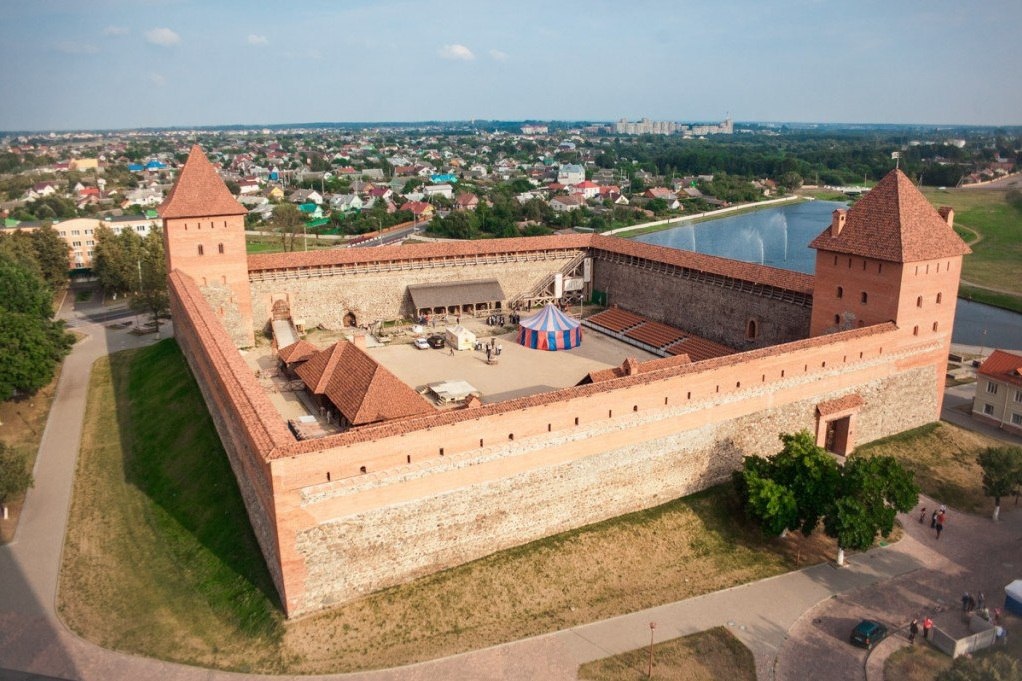
History of Lida Castle
Lida Castle was built in the 1330s by order of knyaz Gedimin and was a part of the defensive front from the Crusaders. Since the 14th century the castle has suffered many attacks and invasions. It was the Crusaders, and then the Anglo-German tried to capture the castle. During the attack of the British, who were about to devastate and burn Lida, the locals burned their houses themselves and hid with the treasures in the castle. This is how Lida disrupted the attack of the British troops. In the 15-16 centuries the castle withstood the attacks of the Crimean Tatars, knyaz Svidrigailo and the troops of Yuri Svyatoslavovich.
Exterior of Lida Castle
Lida Castle looks very massive: huge walls, inaccessible towers and small window-loopholes. It looks like a quadrangle with two towers. The walls of the castle are built of red brick and stone. Red brick was very popular in Europe at that time, there was even created a specific style of "brick gothic". Lida Castle was built in that style. On the southern wall of the castle there are loopholes of three types of equal height and different width. The towers were needed to protect the castle.
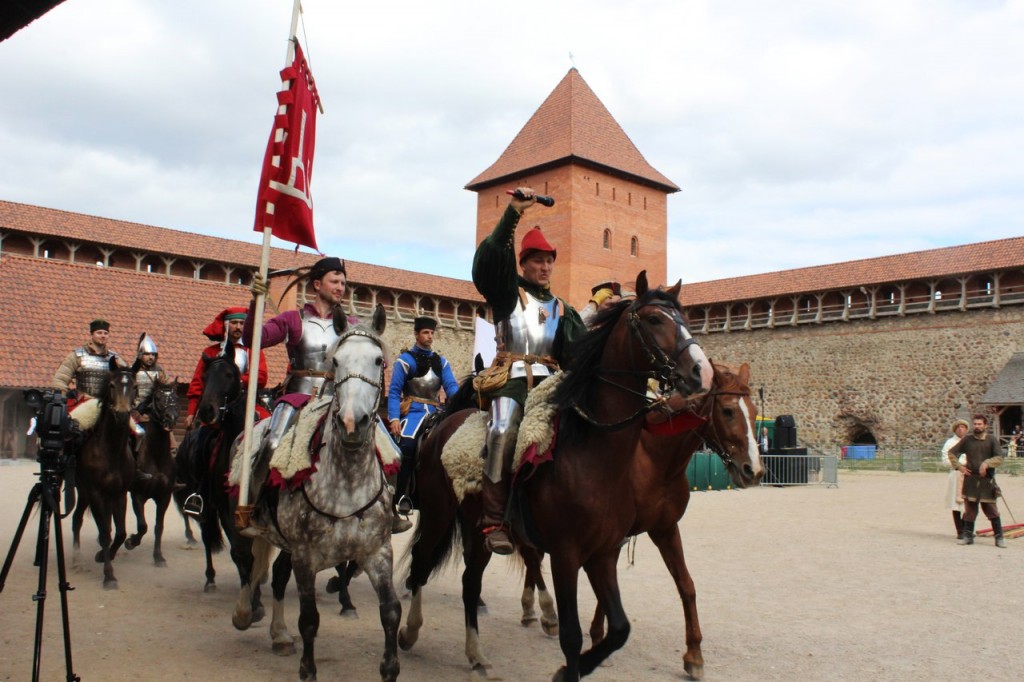
Lida Castle today:
There are historical representations and knight tournaments in Lida Castle today. This is an incredible atmosphere and thing to watch. Every tourist can feel himself in the real Middle Ages.
Legends of Lida Castle
This happened during another siege of the castle. The defense commander was knyaz Dmitry Koribut. He ordered his soldiers to defend Lida Castle to the last drop of blood, and he himself fled the city through a secret passage. All the knyaz’s soldiers folded their heads in that battle with dignity. Ever since their ghosts wandering around the castle.
Travel with pleasure!





